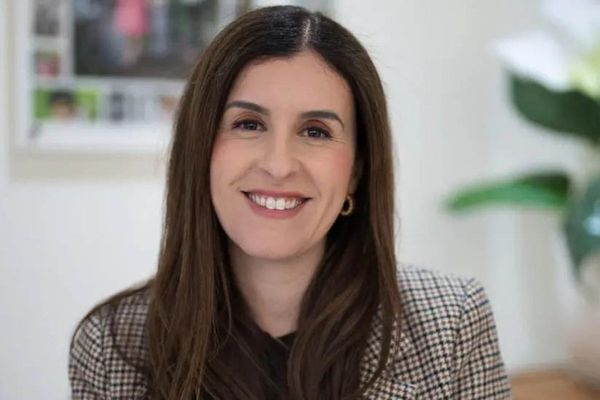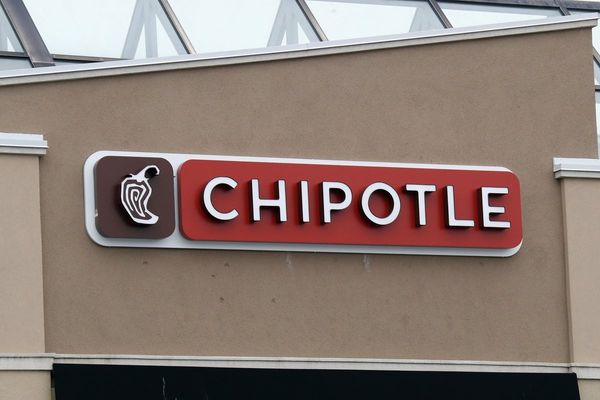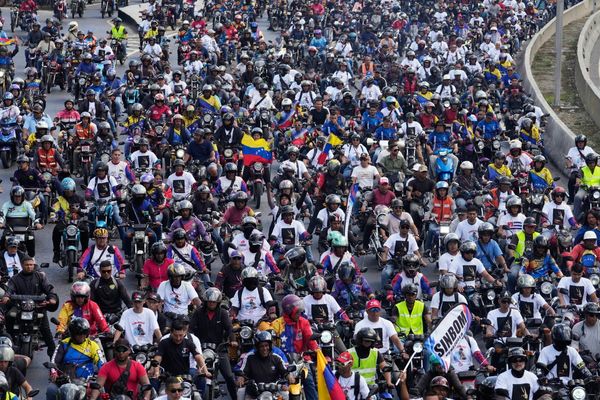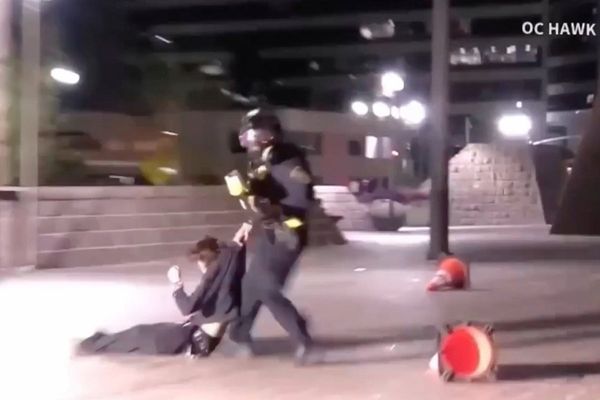Meet the Black matriarchs changing the narrative of First Nations births.
Shanara Fourmile wakes with a small pain under her belly.
It's seven in the morning and the sun is pouring through the window of her home in the Aboriginal community of Yarrabah.
As she opens her eyes, her water breaks.
"I had to waddle to the shower, I put warm water on and I just sat there for maybe 15 minutes," she tells me.
Shanara, an Irukandji woman from far-north Queensland, knows the baby is coming.
She texts her sister, who calls an ambulance.
"The ambulance rocked up like 7:40, and it was my Uncle Richard."
"And he's like 'When did ya water break?' And I said 'seven' and he said, 'And you're just about ringing me?'"
Yarrabah women are directed to birth in Cairns Hospital — an hour's drive through rainforest, winding coastline and cane paddocks.
Shanara knows she won't make it.
Uncle Richard takes the 27-year-old to Yarrabah's small emergency department.
It doesn't have a permanent obstetrician. There's no anaesthetist or resourcing for an emergency caesarean.
No access to epidural or equipment to resuscitate a newborn if the baby is struggling to breathe. And no blood bank in case women haemorrhage after birth.
But it's a slow day, and there are no other patients.
"They're like, 'make as many noises as you want'.
"I think the screaming only came when bub was coming out."
It's the second birth in a week in the tiny emergency department.
Unplanned births occur here every few months — there are around four per year, which for a town the size of Yarrabah, is a lot.
And it's not always an accident.
"I've definitely had women tell me that they waited because they didn't want to go to Cairns," says Tayla Smith, Yarrabah's first Indigenous midwife.
The Kaurna and Narungga woman has invited me into her office at the Gurriny Yealamucka Aboriginal-controlled Health Services.
It's next door to the ED clinic where Shanara Fourmile gave birth.
"For [one] woman, it was purely just having her baby on Gunggandji Country, being a Gunggandji woman. She wanted to have a baby here, so she made that happen."
What she's talking about is known as "birthing on Country".
"In that real spiritual and cultural sense, when a baby is born on Country, you're connected to that Country spiritually, physically.
"But with that connection comes an obligation that that child has to take care of Country for their life, to come back to Country and connect with their culture and their mob."
Local health workers call these women "the naughty mummies" of Yarrabah.
Because while there are benefits for having the baby close to home, in this case, it comes with serious risks.
The clinic is just not set up to deliver babies.
And if there are complications during the delivery, the consequences could be dire.
"Speaking to women, they want the option … they want the option to be able to birth here," says Tayla.
So, if giving birth in Yarrabah's ED is dangerous, why would some women choose to stay?
Removal fear
Tayla says there's another layer of risk that makes hospitals less appealing to First Nations mothers.
In a 2017 audit of Queensland hospitals the state's Anti-Discrimination Commission found an "extremely high" level of "institutional racism" across the Cairns and Hinterland Hospital and Health Service.
"That we don't know things or that our knowledge is unimportant.
"I've had women come back and tell me, ‘I was just sat in the corner of the room and the midwife didn't talk to me, she didn't touch me, she didn't help me.' So yeah, those types of things."
Indigenous children are removed by child services at almost 10 times the rate of non-Indigenous kids.
In Queensland, almost half of the unborn babies referred to child services are Indigenous, despite only making up 7 per cent of the state's births.
Tayla Smith says health workers are regularly the ones making those referrals.
"I've seen women in Queensland Health [facilities], not just Cairns, have a report put in for not attending antenatal care when it's not a reportable mandate," says Tayla.
"So I feel like we're targeted from all different angles."
I asked Cairns Hospital if we could have a sit-down interview.
They declined, so I sent written questions, and asked about Tayla's stories.
In a statement from Queensland Health, I was told safety underpins all decisions they make in relation to maternity services, and that "staff … are duty-bound to report" concerns if they "believe an unborn child is in need of protection".
Queensland Health said it was "committed to ensuring" the institution was free from unlawful discrimination and vilification of patients and staff.
I grew up in Cairns, and I always imagined that hospital is where I'd give birth.
But I'm starting to understand why some Yarrabah mums are scared of the system.
And it's got me thinking about my own mum and a story that's haunted her all her life.
A legacy of control
For 60,000 years Aboriginal and Torres Strait Islander women birthed on Country.
As a descendant of the Quandamooka people of Minjerribah, now known as North Stradbroke Island, I've spent a lifetime learning about the legacy of white control.
My ancestors were forced to live on the Myora Mission, or Moongalba, from the late 1800s till the 1940s under the control of various Chief Protectors.
One of them, Protector Archibald Meston, boasted, "No white man can command the fear and respect of the Australian Black, without an unmistakable manifestation of superior physical and intellectual force."
Quandamooka people were allowed to stay on their traditional lands, but lived under punitive conditions at Myora Mission, including restrictions over access to rations and movement off the island.
I want to know more about how white control has affected the matriarchs in my family, so I travel to Stradbroke Island, to visit my mum, Patsy Brown.
We take her old Hilux up a bush track to the old Myora Mission Cemetery where my grannies are buried.
As we walk carefully among the graves decorated with remnants of baler shells, I learn something new about one of them.
"Auntie Mabel was the midwife, or one of the midwives, in the community here," Mum tells me.
"That would have been just traditional birthing practices."
Auntie Mabel raised my grandfather Edmund Brown and his twin sister Eilene, after their own mother, Grandma Daisy, died from an infection after their birth.
There is a black and white group family photo at mum's place.
My grandfather is about 11 years old and standing with his big mob, wearing a white button-up shirt with high-waisted trousers and his hair slicked to the side in a 1930s-style quiff.
Auntie Mabel stands tall in the middle.
"She was a big carer of people. She'd write to the government, to the Protector and ask for food and blankets and clothing," Mum tells me. "[They'd also eat] bush tucker from the sea and from the land."
That was until my grandfather and his twin sister were removed from Aunty Mabel's care.
"The government saw them as fairer skin," Mum says, "[And thought] they would likely survive in white society."
Until 1969, Australia had a policy of moving lighter-skinned Indigenous children to institutions or white foster families.
It was the government's hope that over time, the Black would be bred out.
Those children are now referred to as The Stolen Generations.
Having seen how removal affected her father, my mum thought she could never give up a child.
"I imagined that I'd grow up … get married and have kids … and then it never works out as you think."
In 1972, when my mum was 20, she fell pregnant and ended up in Boothville House, a Brisbane maternity hospital run by the Salvation Army.
"I felt totally intimidated because this was a big establishment, a beautiful old colonial-type home and the matron was very official," says Mum.
"On Friday night they'd preach to us: ‘Bow down, get down on your knees, you sinners, and ask God for forgiveness.'"
Mum says there was pressure on unmarried women at Boothville House, Indigenous and non-Indigenous, to give up their babies.
On a Sunday night in April, as she went into labour, the matron scolded her for groaning too loudly.
Mum gave birth to a baby boy.
"They didn't like you to feed them or hang around the nursery. They'd say, ‘No, you shouldn't shouldn't be in here.'"
Mum felt she had no option but to leave her newborn behind.
But she had no idea how irreversible that decision would be.
Days later she called Boothville House and said she had, made a terrible mistake.
"And [the matron] said, ‘Well, it's too late. He's already gone.'
"I was gutted. From then on, I was just living with this hole in my heart."
It would be 21 years until mum would be able to see her son again.
As soon as she was legally able, mum found out where my brother was living.
"When I first met him, I remember holding his hand and looking at his fingers and they were the same fingers …
"Exactly the same sort of shape, same configuration of the size of his palms to the size of his fingers, and the shape of his fingernails."
As mum talked with her son again, and got to know his adopted parents, she realised she'd never been told the full story.
My brother didn't go into his new family's care until he was two months old.
And there was a 30-day cooling off period that Mum, like many other unmarried mothers, was never told about.
Single women at institutions like Boothville House had a legal right to change their mind in the weeks after birth.
But a 2012 Senate Inquiry found many institutions purposely withheld this information.
"After meeting him, I just felt like I was back there when that matron said, 'No, he's already gone.' And I thought, 'She's lied to me. She blatantly lied to me to steal my baby.'"
It's hard for Mum not to see the trauma of losing her baby through a Stolen Generations lens. From then on, she distrusted hospitals and was more wary of child services.
For many First Nations women, the fear their children might be removed is still very real, and it manifests in some women delaying trips to cities to give birth — like the "naughty mummies" of Yarrabah.
Midwife Tayla Smith wants women to be able to birth in a purpose-built facility in Yarrabah. But in the meantime, she has an idea to give women travelling to Cairns more support.
It would involve a partnership giving her access to the Cairns Hospital birthing suite as the primary health carer for Yarrabah women, so they can birth with the midwife they know and trust.
"I could go in and be almost like a contractor," Tayla explains.
"So I'm not employed by Queensland Health. I just use your facility."
So far, Tayla's request has been denied.
Background Briefing understands midwives from Aboriginal Community-Controlled Health Organisations like Tayla's are not able to provide clinical care in Queensland hospitals because they're not employees.
"For our mob to be the leaders in that."
"I just feel like we could heal so many generations through primary maternity care and putting money into prevention instead of putting all this money into chronic disease like we do.
"If we put money into women and women's health … our kids aren't going to have chronic disease."
Marilyn Clarke, a Woromi woman who works in Coffs Harbour in New South Wales, is the first Indigenous obstetrician at the Royal Australian and New Zealand College of Obstetricians and Gynaecologists.
Dr Clarke says obstetricians are motivated by safety.
"Obstetricians tend to see labour, pregnancy, birth through the lens of complications and the potential of what can go wrong," she explains.
"There are many women who may be experiencing complications in pregnancy, such as diabetes, particularly in Aboriginal and Torres Strait Islander women.
She says it's critical these births take place in a hospital setting, but accepts that First Nations women don't always feel safe there.
"I think there's institutional racism and sometimes there's just overt racism as well," says Dr Clarke.
"Or, you know, if they do present, they're not listened to or they may be dismissed or sent away."
But others in the profession disagree.
Ian Pettigrew is on the council of the National Association of Specialist Gynaecologists and Obstetricians.
"I must say I can't really agree with that, 'cause I'm not sure of the statistics, but certainly from my own point of view, I don't think there's any difference, really," he says.
"I think people these days are much more culturally aware. And I know up here in Mildura all the staff have to do cultural awareness programs as part of their ongoing development."
I ask him what his understanding of culturally safe maternity care is for First Nations women.
"Well, I don't … well, culturally safe just means anybody's culture. So it's not necessarily Aboriginal women. It's just safe obstetric care, full stop."
Dr Clarke has a different answer.
"To me, it means that the woman is in an environment where she feels safe to express her culture and her identity without fearing any repercussions, and that she's not experiencing any racism," says Dr Clarke.
"This might look like having aunties and grandmothers present, taking the placenta home to bury on country or incorporating other ceremonial practices during birth."
Dr Clarke says RANZCOG does not place the cultural considerations of First Nations women on the same level as physical safety.
"Look, I don't think it is probably perceived as something that's on equal footing by someone who is trained and taught and practises in a very Western paradigm.
"[But] for an Aboriginal person, those considerations may have equal weight to … a physical health risk."
In a statement, RANZCOG said it recognises the vast inequities faced by First Nations women in the healthcare system, and that it's working on a new Reconciliation Action Plan that focuses on Indigenous self-determination.
A maternity model that's working
Indigenous women are more likely to give birth prematurely, and to smaller babies, both of which can lead to chronic health problems later in life.
Around the country, health workers are trying to address that, by giving control back to Indigenous women and their communities.
And there is data to suggest that maternity health outcomes improve when care is Aboriginal-controlled.
In Brisbane, there's a partnership between two Aboriginal-controlled health services and the city's Mater hospital that allows First Nations mums to see the same midwife and family support worker throughout their pregnancy, and after the birth.
A study into the program showed women were 50 per cent less likely to have a preterm birth and were more likely to have normal weight babies.
Queensland Health has invested another $4.6 million into the service , with two new hubs in the south-east of the state.
But there's a stand-out project on the south coast of New South Wales that's going a step further.
Dharawal and Gumbaynggirr woman Mel Briggs is the senior midwife at the Waminda women's clinic in Nowra.
There's Aboriginal art on the walls and an Ernie Dingo documentary on the telly. When I visit, Mel asks me if I'd like a cuppa.
She's fought for seven years for a partnership that, unlike Cairns, will allow Waminda midwives to provide clinical care for First Nations women during labour and birth in the Shoalhaven Hospital.
It's still early days; just one Aboriginal midwife, Mel Briggs, is working in the hospital's maternity ward, one day a week.
"Our women need us there with them," she says.
"They need to be protected from the system because a lot of our mums are very scared of the system, and rightly so."
Waminda is working to make it a permanent arrangement by the end of the year.
"You know [how] when you've got a visiting doctor to a hospital they're called ‘Visiting Medical Officer'? We'll be similar to that," Mel explains in her Nowra office.
"We'll be Visiting Midwifery Officer, so we will admit our own women as private women under the care of Waminda and our midwives."
The next phase is an Aboriginal-owned and governed birthing centre with more First Nations midwives.
Prior to the election, Labor committed $22 million to the project.
"It's been very, very, very challenging to try and open up the people's minds on what it actually means to birth on Country," Mel says.
"The medical world feels threatened that we're taking their role in birthing, but we're trying to form partnerships with the medical world, because we need them.
"I think a lot of the mentality was ‘Who do they think they are to come in and take over our space and take our women?' But it's not their women. It's not their space. It's, ‘Your space is on our Country, and our women are our women from Country.'
"It was taken away, so we're taking it back. And this is what birthing on Country is … we're taking back our birthrights, the rights of our women to birth in a space that they feel safe and comfortable in."
'It is all about control'
Work has been done since the 90s recommending a birthing centre be established in Yarrabah, too.
Wangkamahdla Elder Isabel Tarrago spoke to mothers across five remote Queensland communities for a government-funded report from 1992.
Her report, and another in the wake of it, called for Aboriginal women to be heard, and for more cultural awareness around birth needs.
It's clear the 70-year-old is exasperated their calls are still being ignored.
"It is all about control," she says.
"And about … what does the government really think about us as Aboriginal women?"
I tell her about Yarrabah midwife Tayla Smith's rejected partnership idea with Cairns Hospital.
I ask her, 30 years after her report, why she thinks women haven't been given more control.
"I just plain put it down to racism," she says matter-of-factly.
"The question I want to ask is, ‘Why aren't you letting us do this?'
"Let us have a go and let us do our own business for once in our life."
The stories and histories in this article were published with permission from the Wilson family and the Minjerribah Moorgumpin Elders-in-Council Aboriginal Corporation (MMEIC).
Background Briefing is daring narrative journalism — listen for free on your mobile device on the ABC listen app, Apple Podcasts, Google Podcasts, or your favourite podcast app.
Credits:
Reporters: Carly Williams and ABC Regional Investigations' Charlotte King
Executive producer: Fanou Filali
Digital editor: Annika Blau
Photography: Harriet Tatham, Curtis Rodda, Kristy Sexton-McGrath and Brendan Mounter
Header artwork: Raelea Connolly-Neal
RN in your inbox
Get more stories that go beyond the news cycle with our weekly newsletter.







